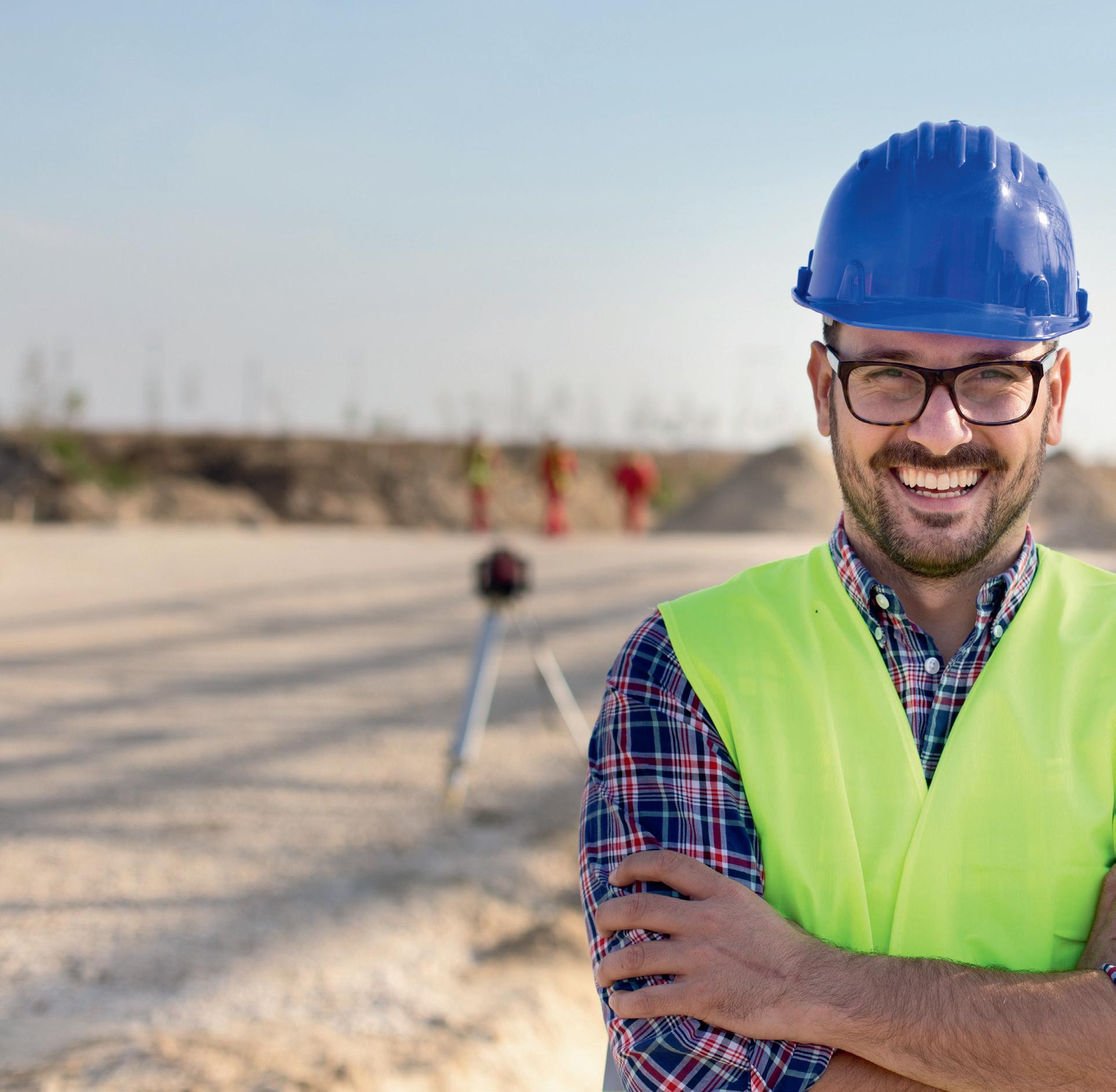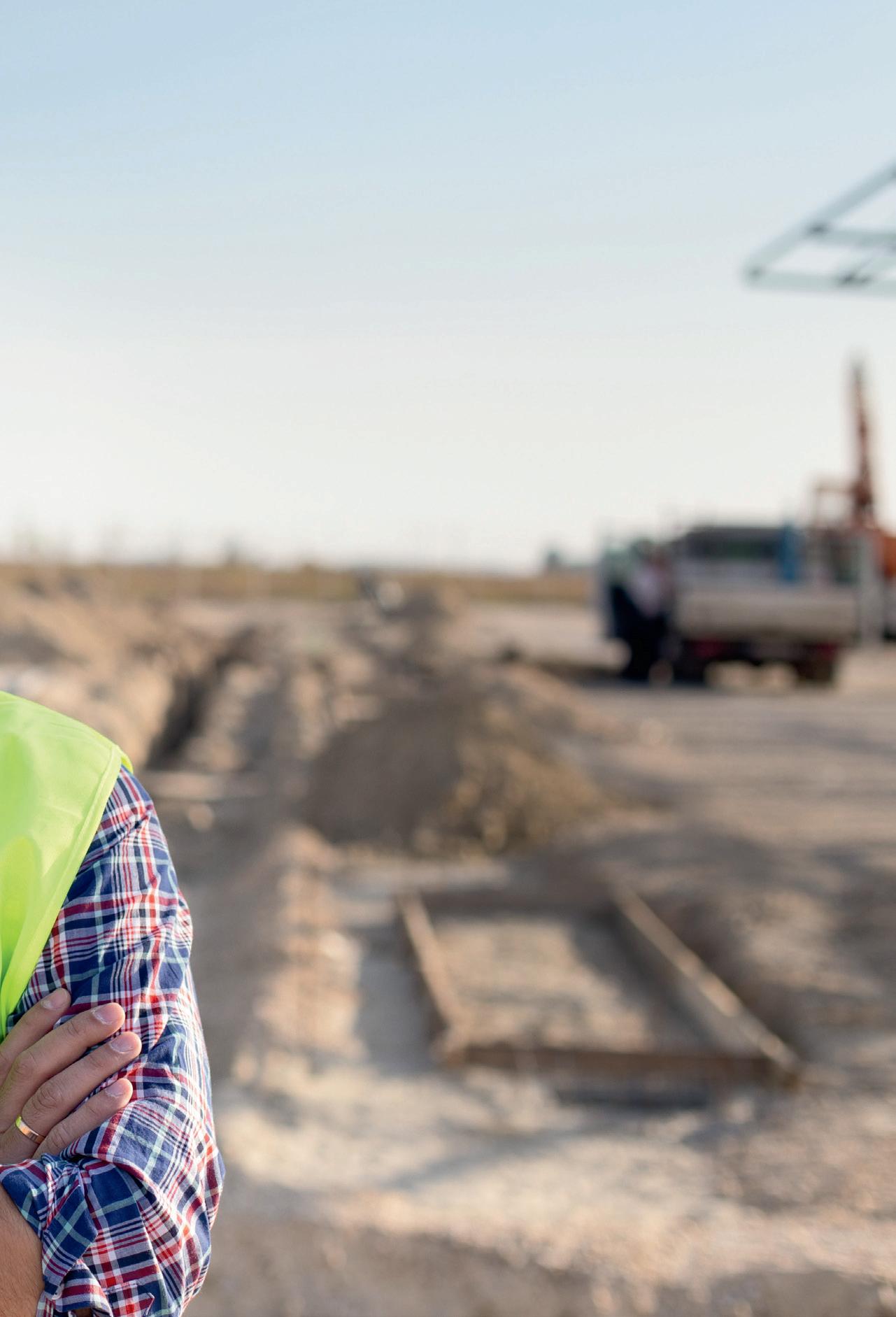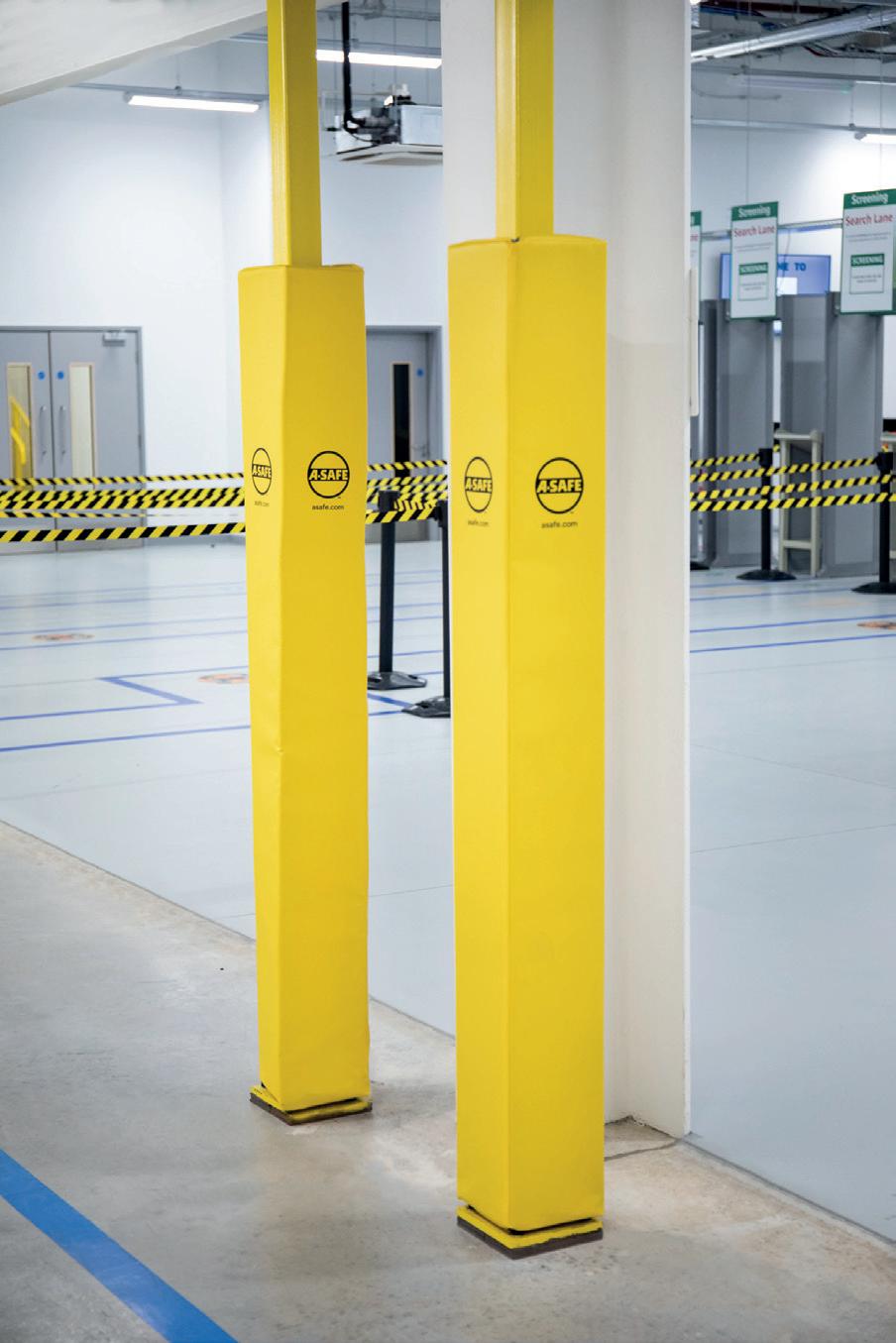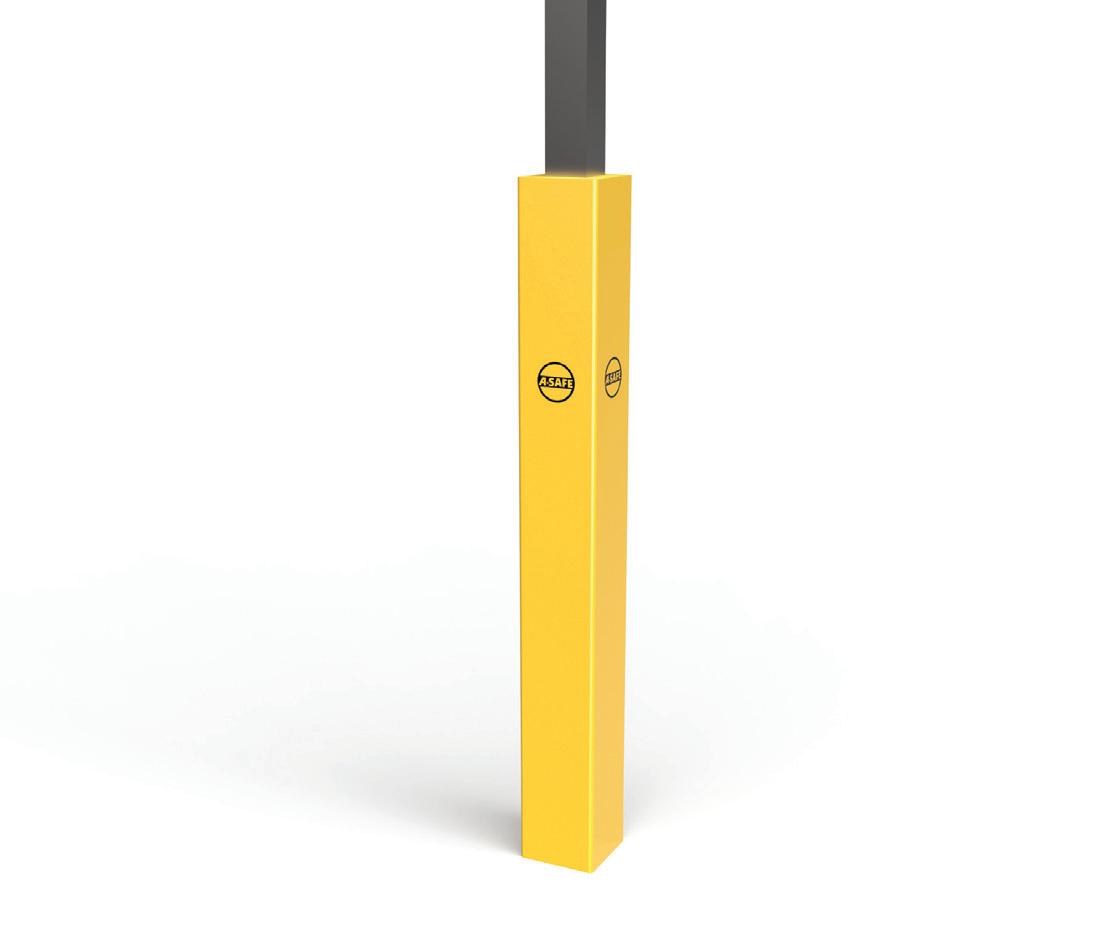
6 minute read
Strong safety culture — its importance during the pandemic
STRONG SAFETY CULTURE
ITS IMPORTANCE DURING THE PANDEMIC
©stock.adobe.com/au/Budimir Jevtic
A strong safety culture is a key goal for any organisation, because every worker in Australia should always work safe. But with regulations increasingly putting more responsibility on the individual worker and additional pressures being brought on by the pandemic, how can safety professionals and workplaces ensure that safety is kept front of mind?
Astrong safety culture can be defined as that which upholds an unwavering commitment to safety. Team members on all levels show unrelenting focus on creating and maintaining a safe workplace and this commitment is evident in the beliefs, values and attitudes of both the organisation and its people. You’ll know you have a strong safety culture when employees do what they need to do to keep themselves and others safe without thinking. It takes time and continued focus to build this type of culture, and relies on a collaborative effort between employee and employer.
A few key fundamentals include: • a commitment from leadership to making safety a priority; • clearly defined safety responsibilities for each level within your organisation, including policies, goals and objectives; • good two-way communication on all levels of the organisation; • providing ongoing training and support for all team members; • continuous monitoring and tracking of progress; • preventing incidents by analysing the working environment and hazards, and uncovering trends.
Management teams need to lead by example and set the bar high. Involving groundlevel teams will help build commitment to the process and any changes. It may also provide greater insight into which control measures may be most effective. Often workers will
MANAGEMENT TEAMS NEED TO LEAD BY EXAMPLE AND SET THE BAR HIGH.
INVOLVING GROUND-LEVEL TEAMS WILL HELP BUILD COMMITMENT TO THE
PROCESS AND ANY CHANGES. IT MAY ALSO PROVIDE GREATER INSIGHT INTO
WHICH CONTROL MEASURES MAY BE MOST EFFECTIVE. OFTEN WORKERS WILL
SHARE SUGGESTIONS FOR IMPROVEMENTS THAT CAN POSITIVELY IMPACT
SAFETY BEHAVIOURS.

share suggestions for improvements that can positively impact safety behaviours.
Managing competing priorities is part of all businesses, but the challenge of balancing productivity and output with safety is an important one for workplaces to get right. We’ve recently been presented with global supply chain issues, but also accelerated e-commerce. Restrictions placed on physical retail stores has seen many businesses and consumers move to online retailing. According to the Australian Bureau of Statistics, in January 2021, online sales had increased 62.8% compared to January 2020. This undoubtedly puts pressure on logistics and warehousing industries where workers need to do more with less time to meet consumer expectations.
It’s understandable that with this added pressure, you’re also at higher risk of workers cutting corners, unless you reinforce what’s important. It comes back to that leadership commitment to show that working safely is more important than hitting the deadline. Another key to overcoming the challenge of increased pressure is to review manual processes that may slow workers down and to reassess resourcing. When workplaces overcome these challenges and engage their teams to stay safe, there are numerous benefits from having a strong safety culture. Reducing injuries and the cost associated is just one of many.
The most common workplace injuries are due to body stress and falls, trips and slips, and direct costs such as workers compensation claims and legal fees are just the tip of the iceberg. Indirect costs such as lost productivity are estimated to equal up to 10 times greater than direct costs. According to Safe Work Australia, from 2018–2019, more than 114,000 serious workplace injury claims were recorded in Australia, with the majority coming from agriculture, manufacturing, transport and warehousing industries. Aside from saving lives and protecting the operations of the business, having a culture where everyone works safely is likely to result in happier, safer and more productive employees and a better place to work.
CASE
STUDY Queensland invests in safer heights future for construction
©stock.adobe.com/au/visoot

As housing construction experiences significant growth in the Sunshine State, the Queensland Government has invested in Gold Coast company Buildsafe through the $100 million QIC-managed Business Investment Fund (BIF), in partnership with Colinton Capital and Minderoo, to make the industry safer. Queensland Treasurer and Minister for Investment Cameron Dick said supporting high-growth businesses is central to the state’s COVID-19 Economic Recovery Plan, and the government will be working with Buildsafe to create more local jobs. “Queensland dwelling approvals are up more than 37% since May 2020, generating significant demand for the building height safety solutions provided by Buildsafe. With Buildsafe’s 20-year track record of innovation and development, the company are in a strong position to capitalise on Queensland’s construction boom, and our investment will ensure they do. It will allow Buildsafe to hire more than 40 new staff and increase production of their industry-trusted products,” said Minister Dick.
Buildsafe provides end-to-end height safety solutions, including fall-guards, scaffolding, walkway systems, void platforms and temporary fencing, to companies such as Metricon, Mirvac, Coral Homes and Brighton Homes. In 20 years, the company has progressed from a few staff to almost 500 employees. Touring Buildsafe’s Arundel headquarters with company co-founder and CEO Milton Young, the Minister said the government’s stake in Buildsafe was the second strategic investment made through the BIF. Minister Dick added that the Business Investment Fund increases access to growth capital for Queensland businesses, with two investments now complete in Buildsafe and Gilmour Space Technologies. “Backing Queensland businesses to innovate and grow, strengthening supply chains across the state and creating new jobs for Queenslanders is what our economic recovery plan is all about,” he said.
Buildsafe CEO Milton Young said the Queensland Government’s support will help the company secure more jobs, continue research and development, and contribute to the state’s economic recovery. Young asserted that the company strives to remain a leader of the industry, and to continue providing state-of-the-art site safety and a dedicated customer service team to grow and strengthen the construction industry. “Buildsafe is an Australian-owned, national business, spread across three states; however, we can see the growth potential that Queensland offers, which is why we have chosen to drive our head office and business here,” Young said. Colinton Capital Partner David Slocomb said Buildsafe has a consistent 20-year track record of growth, with an industryleading focus on product innovation, safety and customer service excellence. “Co-investing alongside the founders, QIC and Minderoo, we are pleased to assist Buildsafe to accelerate their growth,” Slocomb said.
Buildsafe www.buildsafe.net.au


Preserve and protect your people
The A-SAFE Padded Column Guard protects your employees from injuries caused by collisions with columns and other solid vertical structures. With a a durable, high-visibility cover to provide a clear visual warning, while a soft foam core absorbs impact in the event of a collision.

Bespoke to suit any column width, the Padded Column Guard provides 360-degree protection from floor to head height. With a maintenance-free, hygienic cover material that is easy to clean, resistant to water and chemicals, as well as being UV-resistant to prevent fading. The Padded Column Guard is a perfect cost effective solution to any pedestrian area.
For more information contact sales@asafeau.com A-SAFE AUSTRALASIA PTY Ltd Telephone: +61 2 9625 8927 www.safetysolutions.net.auwww.asafeau.com NOVEMBER 2021 - SAFETY SOLUTIONS 19








